Bremen Cafe’s Roots Go Back to 1895
Building began as bar in 1895 and much is still original in popular Riverwest bar.
Saint Casimir’s Roman Catholic Church has dominated the intersection of N. Bremen and E. Clarke streets since it was constructed in 1899, four years after this corner tap across the street was built.
You can be sure that it wasn’t long after the first mass was celebrated at the imposing Polish parish that the first parishoners stopped here for a Sunday beer. It might have even been during mass.
Welcome to the Bremen Cafe, 901 E. Clarke St., which is still serving the Riverwest neighborhood as one of its flagship historic taverns.
The Wisconsin Architecture and History Inventory took a look at this place in 1979, when Riverwest was a sleepy industrial Polish neighborhood with a core of young activist college students who found the area a whole lot cheaper than across the river near campus. It was pretty much just old people and young folks those days, as the child-bearing families headed out to the suburbs, leaving a number of flats — some nice ones — ready to rent for low rates, provided you weren’t too fussy about the maintenance or the neighbors.
The architecture inventory found much to admire in this building, a relatively unscathed example of late 19th century “Boomtown Architecture:”
Good example of this type of frame store flat with partial false front facade. Possesses integrity of form and many original decorative elements including Palladian motif gable window and bracketed corner entrance.
At the time the frame structure had been sheathed in asphalt, which has recently been removed, exposing the original wooden siding. But the building’s original elements are mostly in place inside. It is clear that a woman’s room was added at one point, where side-by-side doors are different sizes and ages. (The one with a giant “W” is larger and newer than its mate.) The original men’s room, without a urinal (or space for one), remains in the back corner of the place. Somebody had written “Indica” on the wall there, which is no doubt among the fragrances the room exuded. Nobody ever died of overwork pushing a mop around a Riverwest tavern floor, that’s for sure.
But a lot of the place is original, with old display windows, moldings, wainscotting and especially vintage maple flooring, timeworn and winter-dirtied. The color palette, which lends itself to black and chartruese, is decidedly post-19th century, and is in no way destined to become a fad in the 21st.
The main room faces the church across the way. There is a corner entrance to the building, which until this year had a door that was located centrally on its frame. A recent, unfortunately insensitive remodeling has shaved a couple of bucks off the budget by hanging the new door on one side of the frame, thus destroying the symmetry. It doesn’t help that the door, and its mate on Bremen street, also hung without symmetry in mind, are cheap residential units, framed in with unfinished plywood and zero molding. On the plus side, new wooden porches at the entrances are somewhat safer than the old concrete stoops that existed before, but their design, too, is strictly residential, and does not recall any Boomtown I’ve encountered. All of this could have been taken care of in a more sensitive matter with just a few minutes of thought, a couple extra sticks of lumber, and the proper hardware.
Inside, fortunately, the remodelers have not been too busy, and the magic of an undisturbed storefront location proves itself to the visitor. A couple of years ago the place sold food and had a grill, but this gear has been scrapped. A back room for years had two pool tables, and they are now gone, with the space repurposed for music, which used to take place in the front room, by the corner entrance.
There is live music practically every night at Bremen, which is a draw. Some acts, like Phil Schwinn and his 4th Street Elevator combo, or his Elevator Trio, or his Elevator Duo, have exposed listeners to authentic Gypsy jazz, and the place is best for smaller, intimate shows of this sort. This is a great room for Bluegrass and other intimate music. Before you leave the black-walled room, plastered with band stickers, try to pluck out a tune on the spinnet piano there. I dare you. There is a reason why that instrument is never used by the visiting bands. It is good, solid oak, though, and should burn pretty good next time we have a campfire.
We’ll get to the bar in a minute, after a trip through the central room, which has the Bremen street entrance and improperly-centered door. It also contains pinball machines, which are alleged to be amusement devices. A Ghost Busters and a Game of Thrones game were silent one night, while a female couple battled it out on the Playboy Mansion Mania machine.
The bar runs most of the length of the main room, with a back bar running along the windowless east wall. It is quite utilitarian, with a pizza oven that gets a workout every now and then. Sometimes the pizza is free, with the objective that the consumer might also buy a drink. This convention was violated one evening, when a customer grabbed a bite and ran. The bartender made sure the Facebook universe was made aware of this transgression in short order.
The decor in the room includes comprehensive lists of happy hour and daily specials. For example, Wednesday is Riverwest night, featuring $2.50 Lakefront pints, and $5.00 Lakefront liters, which is a deal.
Tuesday is Shot and a Beer night, which fits in with most Milwaukeeans’ schedules and tastes.
Scan the tap line, and you will note a familiar sight — the image of St. Casimir Church on the label of the tap handle of Lakefront’s Riverwest Stein Beer. This is a good enough omen that God loves us and wants us to be happy, as Benjamin Franklin put it, so order a Stein Beer while you look around the place.
Come summer we’ll be able to sit outside on Bremen Street, where we shall elicit the jealous attention of those who have to work for a living day by day, and not sit outside a saloon idling their time. There is no place in town more suited to this pastime.
From Day Care to Saloon Not That Far
The few records extant for the building indicate it was built by and for Frank Czsiya, but early records were handwritten, and that name may not have been well transcribed. We show that John Wrecza owned the place by the end of the 19th century, and we find that he updated the plumbing in the Prohibition years of 1918 and 1923. This is a curious time to do plumbing in a saloon, but perhaps the work was done in the upstairs residential units. Maybe they needed another bathtub to make some gin.
The place fell fallow for awhile, but in 1989 it opened as a branch of the nearby Children’s Outing Association run by Jay Blankenship, now the director of development for Children’s Hospital of Wisconsin. Blankenship described it at the time as a “classroom for neighborhood youth to learn job readiness skills, such as interviewing, resume development, application process, etc.”
In 1997-98 it was Gaia Gallery, devoted to local and emerging artworks. Early in this century it served as R. Evolution Bookshop and Cafe before settling down to its current style and dignity in 2002, as the Bremen Cafe.
On Tap - Sponsored by Lakefront Brewery
- Barley John's Old 8
- Black Husky Seasonal
- Ciderboys Apple Cider
- Lakefront Fixed Gear
- Lakefront IPA
- Like Minds Seasonal
- Lakefront Riverwest Stein Beer
- Old Milwaukee
Photo Gallery
The Verdict
- Name: Bremen Cafe
- Location: 901 E. Clarke St., Milwaukee
- Neighborhood: Riverwest
- Subdivision: Fratney’s Subdivision
- Phone Number: 414-431-1932
- Website: http://bremencafe.com/
- Facebook: https://www.facebook.com/Bremen-Cafe-180615265210/
- Twitter: https://twitter.com/bremencafe
- Description: Old commercial building with “Boomtown” facade has weathered the years, and has seen recent investment by its owners. Popular with a younger Riverwest crowd, casual during the day, musical at night.
- Capacity: 80
- Restrooms: 2
- Year Established: 2002
- Year Building Constructed: 1895
- Estimated Annual Rent: 1,572 square foot main bar area at $8.82/sq. ft. = $13,865.04 per year according to the City Assessor’s calculations.
- Property is assessed at $7,200 for the 3,600 sq. ft. lot ($2/sq. ft.) and $162,800 for the 3,967 sq. ft. building for a total assessed value of $170,000.
- Property taxes: 2016 taxes $4,870.02. Paid in Full.
- Property Owner: Neukap Management, LLC.
- Business Owner: David A. Kopp, agent, DOB 11/2/1983, 33%; Thomas G. Kopp, DOB 11/25/1949, 67%.
- Business: 80% alcohol sales, 10% food sales, 10% other (venue).
- Walk Score: 83, Very Walkable. City Average: 61
- Transit Score: 55, Good Transit. City Average: 49
- Bike Rack: There used to be a rack on Bremen south of the side door, plenty of others within sight.
- Aldermanic District: 3rd; Nik Kovac
- County Supervisor District: 13th; Willie Johnson, Jr.
- Police District: 5
The Verdict was researched by Jordan Garcia.
Political Contributions Tracker
Displaying political contributions between people mentioned in this story. Learn more.
- May 7, 2015 - Nik Kovac received $20 from Jay Blankenship
Bar Exam
-
Lakefront Brewery’s New Riverwalk Patio
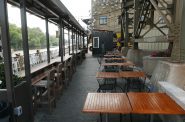 Jul 26th, 2023 by Michael Horne
Jul 26th, 2023 by Michael Horne
-
How Falcon Bowl Was Saved
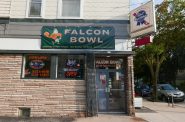 Jul 12th, 2023 by Michael Horne
Jul 12th, 2023 by Michael Horne
-
Clementines Evokes the New Bay View
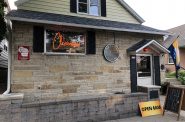 Sep 19th, 2022 by Michael Horne
Sep 19th, 2022 by Michael Horne


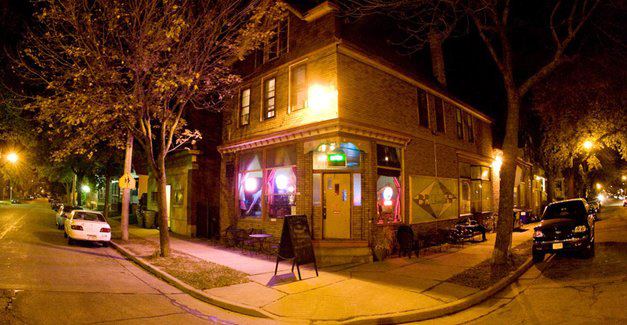

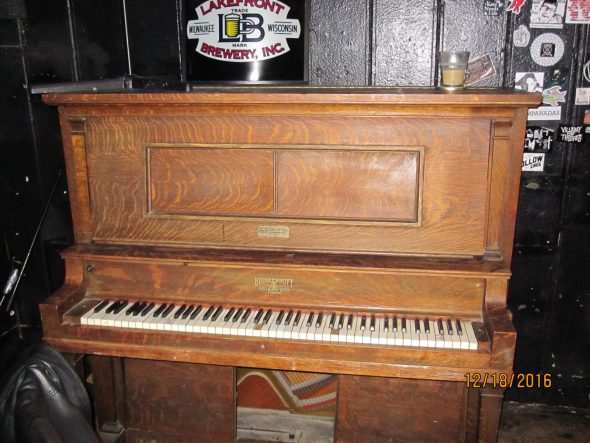
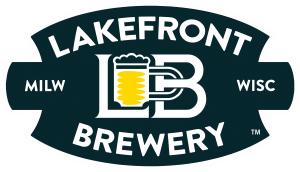
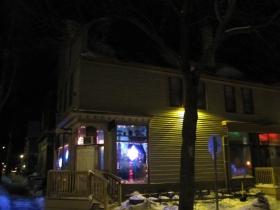
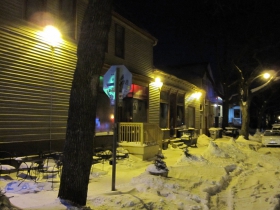
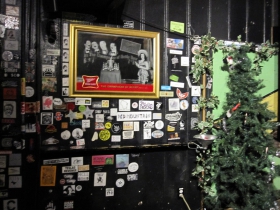
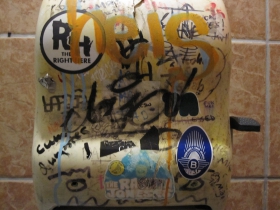

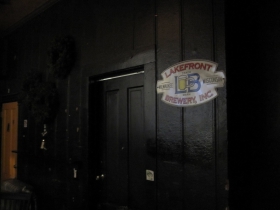




















Michael Horne’s article on the Bremen Cafe is formidable–well researched, well written. Thank you.
My dad owned a tavern in Fond du Lac in the 1940s-50s. Sunday morning before, during and after church was his busy times, taking only second fiddle to Friday afternoons when he cashed a lot of paychecks. Sunday socializing was a German thing.
Dad’s tavern also had a separate entrance for women with a backroom having a few booths, a restroom, and a pass-through counter to order drinks so as to not go into the main bar area.
Fun place when a band is playing. Thanks for the history lesson.
It was St Michael’s Waiting Room in the mid ’80s, a white Sufi, no-smoking coffee-house at a time when cigarettes and coffee were synonymous. That closed in 1987 and Metropolitan Gallery would occupy it for the next three years, moving to S. 5th St. in 1989 (closing in ’93). Metropolitan was run by Jim Pattison, Ellen Straw, my future wife Linda Matschull & I (plus Linda’s folks Herb & Shirley). We held our wedding reception there in ’88. Metropolitan had shows there by Prophet Blackmon and many local artists, and some works by Eugene Von Breuchenhein. We held events there, including two solo concerts by folkie Peter Stampfel and notably “8/8/88: Goal Zero Reads for a Week”. Goal Zero Poetry Group was an early spoken word (pre-Poetry Slam days) group that Jim Pattison and I were members of (if anyone is interested http://my.execpc.com/~artkm/gzphistory.html ), and ‘8/8/88″ lasted the week leading to that date. It was built around the fact that Polish George stored a huge amount of used books in the basement there, having run used bookstores on and off since the Beat Generation days. So GZ read random books to inspire poetry, wrote and read on the spot for whatever audience showed up — a “working week” culminating on the day of the decade. So many memories of this address.
Kent Mueller–I read your article with great interest. Thanks for the sidebar on Polish GEORGE Rzezotarski and our Dancing Bear. After St. Michael’s Waiting Room closed, those books stayed under tarps on our front porch until our friend Gary Gresl (managing the Milwaukee Antique Center in the Ward) rented us space there. Lolly Rz
Kent Mueller–Thanks for the memory of my husband Polish GEORGE Rzezotarski. Indeed, a couple thousand books from the Dancing Bear were ensconced there. When St. Michael’s Waiting Room closed, we had only a couple days to move them out. They resided under tarps on our front porch until we relocated in the Milwaukee Antique Center down in the Ward at 341 North Milwaukee Street.
Oh Yes! St. Michael’s Waiting Room…. run by Ron Retzlaff and Elizabeth Goldberg….a spiritual meeting place…..8 person meditations in the back room on Tuesday nights (Octacals) done for the sake of world conscious upliftments and to benefit of all sentient beings. Are there still living quarters upstairs? Good for those who are employed on 2nd shift jobs….. When I now look for roommates I seek people who read, meditate , or do creative writing and need a quiet place……now, there is so much LIFE here….another kind of joy…..and still . a place endowed with a history of indubitable social CHARISMA.
Your patron saint, Michael. What a fabulous name for this “waiting” room.
Thanks Michael Horne, for telling the succession of remarkable stories of another “unremarkable” building, and for others embellishing those tales.
Having lived one block away on Wright Street in the early-mid ’70s in a huge second-four flat (with attic rooms) with students and others, I can vouch that this was true:
“It was pretty much just old people and young folks those days, as the child-bearing families headed out to the suburbs, leaving a number of flats — some nice ones — ready to rent for low rates, provided you weren’t too fussy about the maintenance or the neighbors.”
One notable exception was a young family on the corner of Wright and Bremen in what had been a commercial storefront (the other three corners were bars, if memory serves). The popular and spirited midwife Ginny Felch and her artist husband lived there with their two very-young offspring. A house or two away was white-haired Josephine who tended a prolific vegetable garden and happily befriended us newcomers and shared her harvest.